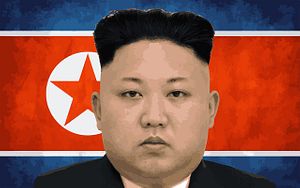Despite American media’s apparent confusion on the subject, what North Korea wants has actually been surprisingly clear and consistent for the last 30 years. For those who really study the region and pay attention to the rhetoric, both current and historical, Pyongyang’s goal has been the same throughout this period: North Korea wants normalized relations with the United States.
Let’s take a moment to recount the history. In what might be a surprise to many, North Korea was originally a member of the Treaty on the Non-Proliferation of Nuclear Weapons, signing on in 1985. In 1992, the International Atomic Energy Agency (IAEA) began its inspections in North Korea, discovering inconsistencies in the amount of nuclear waste North Korea said it had produced. This prompted inspectors to request access to two nuclear waste sites, access that was denied, precipitating North Korea’s withdrawal from the treaty in the summer of 1993.
In the winter of that year, Pyongyang solicited Washington for talks to resolve “all issues dividing them.” The newly elected Clinton administration was receptive, even suspending “Team Spirit” military drills with Seoul as a sign of good faith. The resulting talks gave birth to what was known as the “Agreed Framework” of 1994.
The “Agreed Framework” essentially held four provisions. First, Pyongyang would halt operation of its graphite-moderated nuclear reactors and allow inspectors to return. Second, the United States would fund and build two light-water reactors to replace the graphite ones. Light-water reactors produce energy but are considerably more difficult to use in weapons development. Third, the United States would provide oil subsidies in the interim until the new reactors were finished. Finally, both countries would move toward a full normalization of both economic and diplomatic relations, with the U.S. guaranteeing it would not use nuclear weapons in a strategic attack against Pyongyang.
After the agreement was signed in 1994, North Korea suspended nuclear activity and allowed inspectors back in, to the satisfaction of the IAEA. However, the sudden change of U.S. congressional control to Republicans made it very difficult for the Clinton administration to make good on its promises. Amid staunch congressional opposition, the White House struggled to find funding for the reactors and provide oil in a timely manner. This resulted in significant delays and much protest from Pyongyang.
The phasing out of economic sanctions placed on North Korea since the end of the Korean War was the one provision most important to Pyongyang. On this item, the Clinton administration failed completely to deliver any results. This eventually precipitated the secret resumption of North Korean nuclear activity in 1998, something it was revealed later the United States was aware of at the time.
Looking at things from the North Korean perspective, one could even say that Pyongyang had been patient, waiting for over three years before concluding the United States was not going to deliver on its promises. Adding insult to injury, the Bush administration labeled North Korea as part of an “axis of evil,” wiping out any goodwill that may have been generated by the previous administration. This chain of events and American reluctance to reengage North Korea no doubt motivated South Korean President Kim Dae-jung’s urgency to implement the “Sunshine Policy” and maintain progress with Pyongyang, even offering what appears to have been a cash payment of a half billion dollars.
Given this historical background, Pyongyang appears heading for another try at the old deal. Kim Jong-un has made his rounds, visiting China and sending top diplomats to Seoul to reassure each of his willingness to denuclearize, even announcing this week a halt to all missile and nuclear tests. For the moment, Washington appears receptive, having agreed previously to delay the “Foal Eagle” military exercises with South Korea and even sending CIA director (and secretary of state nominee) Mike Pompeo to meet Kim in secret. All signs point to a deal being forged, but everything on North Korea’s end will hinge on whether President Trump is willing to give Pyongyang what it wants most: a normalization of relations.
There will be many in the United States who will argue that North Korea does not deserve such treatment because of the cruel, oppressive nature of its dictatorship. However, Washington has never shied away from doing business with other oppressive regimes, even awarding Turkmenistan “most favored nation” status despite the latter regularly scoring just as low as North Korea on the United States’ own annual “Freedom in the World” report. Such inconsistencies point to the presence of other priorities coming into play. Given that Kim Jong-un has gone through great lengths to bankrupt his country and starve his people in order to create this moment of dialogue, one can only hope the Trump administration takes it seriously.
Justin Fendos is a professor at Dongseo University in South Korea and the associate director of the Tan School at Fudan University in Shanghai.

































